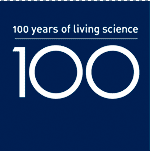Timeline
- 1845 – 1899 |
- 1900 – 1909 |
- 1910 – 1919 |
- 1920 – 1929 |
- 1930 – 1939 |
- 1940 – 1949 |
- 1950 – 1959 |
- 1960 – 1969 |
- 1970 – 1979 |
- 1980 – 1989 |
- 1990 – 1999 |
- 2000 – present
Imperial College 1970 - 1979
World
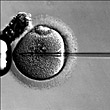 1978 - World's first test-tube baby is born
1978 - World's first test-tube baby is born
Louise Brown, the first 'test-tube baby', was a success for 'in vitro' fertilisation (IVF), a method by which the egg is fertilized outside the womb and the embryos inserted into the womb. By the end of the 20th century, about 1,400 IVF babies were being born each year.
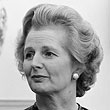 1979 - Margaret Thatcher First Woman Prime Minister of Great Britain
1979 - Margaret Thatcher First Woman Prime Minister of Great Britain
Margaret Hilda Thatcher, Baroness Thatcher, LG, OM, PC, FRS was Prime Minister of the United Kingdom from 1979 to 1990.
Thatcher was the longest-serving British Prime Minister since William Gladstone, and had the longest continuous period in office since Lord Liverpool in the early nineteenth century. She is also the only woman to have served as Prime Minister.
College
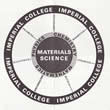 1971 - Department of Metallurgy changes name to include Materials Science
1971 - Department of Metallurgy changes name to include Materials Science
Two separate degree courses are established: Metallurgy, leading to a BScEng. degree and Materials Science, leading to a BSc. A high voltage transmission electron microscope is obtained and research continues to thrive both in metallurgy and in ceramic, electrical and composite materials.
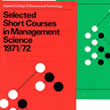 1971 - Department of Management Science created
1971 - Department of Management Science created
The Management Engineering Section of the Mechanical Engineering Department became an independent department of Management Science with Samual Eilon as Head of Department and Professor of Management Science.
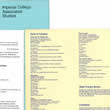 1972 - Associated Studies Department created
1972 - Associated Studies Department created
Members of the new department included Sinclair Goodlad who taught expression of technical ideas to students in the Electrical Engineering Department. The development of foreign language teaching was an important element.
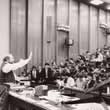 1976 - Physics Building renamed Blackett Laboratory
1976 - Physics Building renamed Blackett Laboratory
Prime Minister Harold Wilson gave the Blackett Memorial Lecture and renamed Physics Building the Blackett Laboratory.
Watch a film of the opening ceremony.
back to top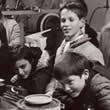 1976 - Pimlico Connection launched
1976 - Pimlico Connection launched
The Pimlico Connection was launched as a scheme for Imperial engineering students to assist with science teaching in local schools. The initiative was instigated by Sinclair Goodlad, Electrical Engineering and the Humanities Department.
Watch footage of the Pimlico Connection's 30th birthday party.
back to top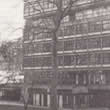 1976 - Anonymous benefaction for student hall residence which became Linstead Hall Extension
1976 - Anonymous benefaction for student hall residence which became Linstead Hall Extension
A further benefaction for an extension of a student hall of residence was received in 1976, on the understanding that the donor remain anonymous, and dining facilities continued to be provided and that women could now be admitted. As a result, Linstead Hall Extension was built on east side Princes’ Gardens.
 1977 - Huxley Building on Queen's gate completed
1977 - Huxley Building on Queen's gate completed
The Huxley Building on Queen's Gate accommodated the Department of Computing and the Department of Mathematics. It was opened by Sir Andrew Huxley, the grandson of T.H. Huxley, the first Dean of the Royal College of Science.
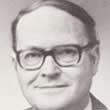 1978 - Department of Social And Economic Studies founded
1978 - Department of Social And Economic Studies founded
Following the Huddie Report on non scientific subjects at Imperial, the Department of Social and Economic Studies was founded Industrial Sociology and Economics. Aubrey Silberston (pictured left) held the first Chair of Economics, Dorothy Wedderburn, Professor of Industrial Sociology was the first Head of Department.
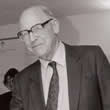 1978 - 4 Year Engineering Course began
1978 - 4 Year Engineering Course began
Recommended by the Dainton report (Dainton picture left), increasing the length of the Engineering course was designed to expand students possibilities in obtaining managerial posts in industry by adding a year of study in industrial, social and economic studies. This was 'to produce engineers of a very high quality with an understanding of engineering in its managerial, social and economic context and able to advance to responsible positions in manufacturing industry'. Universities made bids for University Grants Committee funds for this and Imperial was one of those accepted.
David Huddie had come to similar conclusions as to the need for expansion studies from his in-depth investigation of Imperial and its courses.
back to topPeople
 Denis Gabor (1900-1979)
Denis Gabor (1900-1979)
Born in Hungary, Denis Gabor and his brother George were encouraged by their father to build electronic equipment at home. During his university education and first job he lived in Germany. After obtaining his doctorate in 1927, he worked for Siemans and Halske AG. Leaving Germany when Hitler came to power, Gabor took a job at British Thomson Houston (BTH) in Rugy in 1934. He married Marjory Butler in 1936 and persuaded his brother Andre, a mathematician, to emigrate to England and also take out citizenship on the eve of World War II. During the war Denis Gabor was registered as an Alien with Special Qualifications and had to work outside the main BTH building in a hut by the fence. In 1948 Gabor joined Imperial as Reader in Electron Physics, was appointed FRS in 1956 and Professor of Applied Electron Physics in 1958, retiring from the Chair to become Professor Emeritus and Research Fellow in 1967.
His experiments on holography began in the 1940s and on the flat television tube in the 1950s. For the Invention of Holography Gabor was awarded the Nobel Prize for Physics in 1971.
His niece, Janet Kitchen, revealed "He built a villa in Italy with his Nobel Prize money and his favourite form of relaxation there, apart from visits to the beach, was table tennis, which he would play with his guests on the terrace each evening before dinner".
The first engineer to win the prize – he always thought of himself as an inventor. He wrote on the theory of communication. His concern for society was demonstrated in his being a founding member of the Club of Rome and writing on the progress of society in relation to modern technology.
- Listen to a repeat of Gabor’s Nobel lecture, delivered at Imperial during a time of power shortages.
- Listen to Sir Eric Ash and Prof Igor Aleksander discuss Ash’s time with Gabor in his research lab.
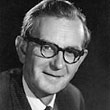 Rodney Robert Porter (1917-1985)
Rodney Robert Porter (1917-1985)
Rodney Robert Porter was educated at Liverpool University graduating in 1939 in Biochemistry, gaining his PhD from Cambridge in 1948. Between 1949 and 1960, Porter worked for the National Institute of Medical Research.
He became Pfizer Professor of Immunology at St Mary's Hospital Medical School in 1960, holding the post until 1967. He was appointed to the Whitley Chair of Biochemistry in 1967.
In 1972 Porter won the Nobel Prize for Medicine or Physiology, jointly with G.M.Edelman for determining the exact structure of an antibody.
 Brian Hilton Flowers Baron Flowers of Queen's Gate (1924)
Brian Hilton Flowers Baron Flowers of Queen's Gate (1924)
Brian Hilton Flowers was educated at Gonville and Caius College Cambridge where he read physics and electronics from there he joined the Anglo-Canadian Atomic Energy Project in Canada, at the University of Montreal, in 1944, and at Chalk River, Ontario in 1945.
Returning to England Flowers joined the Nuclear Physics Division of the Atomic Energy Research Establishment, Harwell in 1946, working on the measurement of the thermal cross-section of tritium and devising a method of measuring the photodisintegration of the deuteron. In 1948 he transferred to the Theoretical Physics Division at Harwell, undertaking work on nuclear reactions.
Moving to the Department of Mathematical Physics at Birmingham between 1950-1952, he worked on problems of nuclear structure relating to the nuclear shell model, in collaboration with AR Edmonds. Flowers was awarded a DSc by the University of Birmingham in 1953.
He became Head of the Theoretical Physics Division at Harwell in 1952, then Chief Research Scientist in 1958. He was appointed Professor of Theoretical Physics University of Manchester in 1958. Flowers was elected Fellow of the Royal Society in 1961 and Langworthy Professor of Physics and Head of Department between 1961-1972.
He became a member of the Advisory Council on Scientific Policy from 1962 to 1964 and of the Council for Scientific Policy, 1965-1967. Flowers was knighted in 1966. He became Chairman of the Computer Board for Universities and Research Councils 1966-1970 and then Chairman of the Science Research Council (SRC), 1967-1975, ensuring United Kingdom participation in the 300 GeV project at CERN and the SRC's establishment and development of the Engineering Board.
Flowers was appointed Rector of Imperial in 1973 and held the post until 1985. His other duties and appointments included his being President of the Institute of Physics1972-1974, and the European Science Foundation, 1974-1980; Chairman of the Royal Commission on Environmental Pollution, 1973-1976, and the Standing Commission on Energy and the Environment, 1978-1981.
In 1979, he was created a life peer taking the title Baron Flowers of Queen's Gate in the City of Westminster. Politically he was a founder member of the Social Democratic Party in 1981 and front bench spokesman on issues relating to science, education, energy and the environment until 1989. He became Chairman of the Committee of Vice-Chancellors and Principals in 1983-1985; Vice-Chancellor of the University of London, 1985-1990. He was Chairman of the Nuffield Foundation 1987-1998, then Chairman of the House of Lords Select Committee on Science and Technology, 1989-1993 and President of the Parliamentary and Scientific Committee, 1993-1997. Flowers was Chancellor of the University of Manchester in 1994.
His work in the House of Lords continues and he and his wife Mary and their family remember very fondly their time at Imperial, including the privilege of living in the Rector's Lodgings in the College's Norman Shaw House, 170 Queen's Gate.
Watch Lord and Lady Flowers talking about their relationship with the students.
back to top Janet Vida Watson (1923-1985)
Janet Vida Watson (1923-1985)
Appointed Senior Lecturer in Geology in 1973, Janet Watson was awarded a personal Chair in 1974, becoming Imperial’s 3rd woman professor. She was the first woman graduate of the Geology Department, graduating with first class honours in 1947.
She was awarded a Senior Studentship by the 1851 Commission and remained at College whilst holding this 1949 to 1952. She became Research Assistant under H.H. Read. With her husband John Sutton, also later Professor of Geology at RSM, she was awarded the Lyell Fund in 1954, the Bigsby Medal in 1965 by the Geological Society and in 1973 Janet won the Geological Society’s Lyell Medal. She became FRS in 1979.
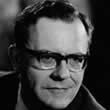 Professor Sir Geoffrey Wilkinson (1921-1996)
Professor Sir Geoffrey Wilkinson (1921-1996)
Professor Wilkinson was educated at Imperial, winning a Royal Scholarship to do so, graduating in Chemistry in 1941.
Between 1942 and 1946 he was in Canada working on a nuclear energy programme. From there he went to the Massachussetts Institute of Technology and developed work on transition metal complexes of ligands including olefin complexes. In 1951 he moved to Harvard, then in 1955 returned to Imperial as Professor of Inorganic Chemistry, where he spent the rest of his career.
His Chair was later renamed The Sir Edward Frankland Chair - Frankland was a pioneer in organometallic chemistry and had been at the RCS in the 19th century.
Wilkinson worked mainly on the complexes of transition metals at Imperial and discovered the structure of ferrocene and invented Wilkinson's Catalyst which has industrial applications. He was made FRS in 1965. In 1962, with F.A. Cotton he wrote what was to become the standard textbook on inorganic chemistry, known as Cotton and Wilkinson which ran into the 6th edition in 1996.
He won the Nobel Prize for Chemistry in 1973, jointly with Ernst Otto Fischer for work on organometallic compounds. Wilkinson was knighted in 1976.
back to top Sir David Huddie (1914-1998)
Sir David Huddie (1914-1998)
A former Managing Director of Roll Royce Engines, Sir David worked with Sir Hugh Ford to develop the total technology course in the department of Mechanical Engineering.
Read Sir Hugh Ford's obituary of Sir David.
back to top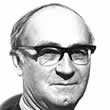 Henry Fisher (1918-2005)
Henry Fisher (1918-2005)
The Hon. Sir Henry Fisher became Chairman of Imperial College Council in 1975 until 1988.
Son of Lord Fisher of Lambeth, former Archbishop of Canterbury, Sir Henry was educated at Oxford, called to the Bar by the Inner temple in 1947 and appointed Queen's Counsel in 1967.
Fisher had a distinguished judicial career. He joined J.Henry Schroder and Wagg and Company as Director in 1970. In 1975 he was also appointed President of Wolfson College Oxford in addition to being Chairman of Imperial's Governing Body.
back to top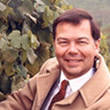 Professor Richard Selley
Professor Richard Selley
Dick Selley came to Imperial in 1961 as a research student. Aside from three years working in petroleum exploration in the North Sea and abroad, his career was made at Imperial College. Selley became Head of the Department of Geology in 1975. He became Professor of Applied Sedimentology in 1989. Selley was a member of Conoco's (today Conoco-Philips) exploration team that found the Lyell, Murchison and Hutton fields and has worked extensively in the application of sedimentology to petroleum exploration and production.
There is a fossil named after Selley - tenuitellinata selleyi - which was a foraminifera that lived in the Pacific Ocean during the Miocene Period 5 -24 million years ago.
Selley has recently applied his geological experience to the vinyards of England. It was on his advice that Denbies, the largest vineyard in the UK, was established on the North Downs - Dick, a local resident, recognised there a similarity in soil and climate to the Champagne area of France. Since its first vintage in 1989, its wines have collected many national and international awards, giving connoisseurs everywhere good reason to toast his vision.
back to top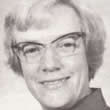 Anita Bailey
Anita Bailey
Educated at Witwatersrand and Cambridge Universities and awarded an 1851 Commission Senior Studentship Anita Bailey became the Smithson Research Fellow of the Royal Society and a Fellow of Newnham College.
Her research interests included friction and lubrication. She joined the MRC Biophysics Research Unit at King's College London in 1964, then worked at a Research Institute of Fraunhofer Gesellschaft in Germany.
In 1976 she took the newly established Kodak Chair of Interface Science in the Chemical Engineering Department of Imperial, becoming Imperial's 4th Woman Professor.
back to top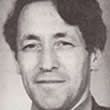 Professor David Blow (1931-2004)
Professor David Blow (1931-2004)
David Blow joined Imperial as Professor of Biophysics in 1977, a position he retained until his retirement in 1994. He was also Head of Physics (1991-1994) and Dean of the RCS (1981-1984). He was educated at Cambridge and was a research student under Max Perutz at the Cavendish Laboratory.
Blow was a pioneer of protein crystallography, a method which over the last 40 years has been used to determine the atomic structure of thousands of proteins, most of them important in biology or medicine. Blow made key contributions to the theory and practice of protein crystallography. He also pioneered computer methods for molecular biology.
Blow collaborated with Brian Hartley in research on the digestive enzyme chymotrypsin. Blow led the team that determined its structure in 1967, only the third or the fourth protein structure to be known. At Imperial, Blow continued his earlier ground-breaking work, mainly on the structure and mechanisms of action of enzymes.
back to top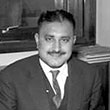 Dr Abdus Salam (1926-1996)
Dr Abdus Salam (1926-1996)
Dr. Abdus Salam was educated at the Government College Lahore and Cambridge, graduating with first class honours in Mathematics and Physics in 1949. He won the Smith's Prize at St John's College Cambridge in 1950 and obtained his PhD in 1951. This was on quantum electrodynamics and gained him the Adam's Prize.
Between 1951 and 1954 he was Lecturer in Mathematics at the Government School in Lahore, before becoming Lecturer in Mathematics at Cambridge.
He next took a post at Imperial and was made FRS in 1955. Between 1956 and his retirement he held the Chair of Theoretical Physics at Imperial. During this tenure he was given leave to set up the International Centre for Theoretical Physics in Trieste, which he founded in 1964.
He was awarded the Nobel Prize in Physics, in 1979, jointly with S.Glashow and S. Weinberg for his electroweak theory concepts. The practice was later proven at CERN where the W and Z bosons were discovered.
back to top© 2007 Imperial College London
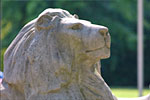
Through the first decade of the twenty-first century the campaign seeks to philanthropically raise £207 million from Imperial’s alumni, staff and friends, and donations from charitable foundations and industry.
Where your support can make a differenceGive now

We’re celebrating 100 years of living science with 100 stories. We’ve collected some of them already, and invite you to share your own stories and memories.

